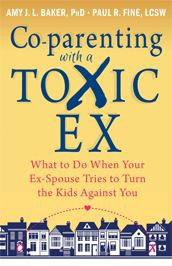Separated Families Statistics Give Pause For Thought

- This blog contains affiliate links, which we may receive a commission for purchases. The decision is yours, whether or not you decide to buy.
The Department for Work and Pensions published something new, which must surely be of interest to anyone involved with the family justice system: statistics about the separated family population. We have seen something similar to this previously, but the methodology used to produce these statistics is apparently more accurate than before.
The purpose of the statistics is to provide information on child maintenance arrangements between parents in separated families. I will come to that in a moment, but first I will deal with the main figures, which must surely give pause for thought, and not just to those concerned with child maintenance.
The main figures relate to the number of separated families in Great Britain, and the number of children in those families. A ‘separated family’ is defined as one resident parent, one non-resident parent and any biological or adopted children they have between them who are either under 16 or under 20 and in full-time non-tertiary education.
Obviously, a ‘resident parent’ is the parent who has the main day-to-day care of any relevant children, and a ‘non-resident parent’ is the other parent. The terminology, of course, is similar to that used in the child support system.
So to the figures, which are for the period April 2014 to March 2017. They show that at any point during that time there were around 2.5 million separated families in Great Britain, which included about 3.9 million children.
Just let that sink in for a moment. Roughly 20% of the population are children, and the total population is about 65 million. By my calculation that means there are about 13 million children. That in turn means that getting on for one in every three children comes from a separated family.
OK, I realise that my own methodology here leaves something to be desired, but you get the point: a very large proportion of children in this country come from a separated (some might say ‘broken’) family.
I’m sure a lot of people would be appalled by these figures. However, it would be quite wrong to assume that all of these children are unhappy or deprived.
How the separation of their parents has affected them depends upon many factors, not least how well the parents have managed the separation, including in terms of ensuring that the children continue to have a close relationship with both parents.
The cliché that children are resilient has some truth in it: children are perfectly capable of adapting to the separation of their parents, provided the conditions are right. OK, to the child maintenance aspect of the statistics (child maintenance, of course, being one of the matters that separating parents usually have to deal with).
The headline figure is that in 2016/17 around 48% of separated families had a child maintenance arrangement, down from 55% in the previous two years.
This seems like a significant drop, although it may be due to child support arrangements being moved from the Child Support Agency (‘CSA’) to the Child Maintenance Service (‘CMS’) – it will be interesting to see if there is any further drop in the coming years.
Whatever, less than half of separated families having any child maintenance arrangement seems pretty low to me.
How many children suffering from economic hardship does that represent?
Lastly, the statistics look at the different types of child maintenance arrangement. These are defined as either ‘statutory arrangements’ or (you’ve guessed it) ‘non-statutory arrangements’. Statutory arrangements are those which have been arranged with the CSA or the CMS.
Non-statutory arrangements include all other arrangements, such as: voluntary financial arrangements which involve direct monetary payments between parents where the CMS or CSA have not been involved; voluntary non-financial arrangements involving payments in kind; other types of arrangements including shared care arrangements; and court orders requiring parents to make financial payments.
The figures show that in 2016/17 17% of separated families had statutory arrangements, and 29% had non-statutory arrangements (the other 2% were cases which had both). In other words, if there is a maintenance arrangement, it is considerably more likely not to involve the CMS. All of this seems to me to indicate a victory of sorts for the government’s child support policy.
The main aim of that policy was clearly to save money by not involving the state in sorting out child maintenance whenever possible, and the statistics show that in only less than a fifth of cases is the state having to get fully involved. Whether this is a victory for children is another matter entirely…
This article originally appeared on the Stowe Family Law Blog
You may also like
Books
Buy now from Amazon
Podcast
If you’re looking for some straight-up, positive advice on topics that affect your daily life, then check out The Sue Atkins Parenting Show. Each week Sue bare will discuss every possible aspect of your parenting challenges, from weaning to whining, boundaries round technology to stroppy teens. You’ll get practical tips, techniques and advice that really work- and it’s all totally free.
Articles
- 5 Ways To Parent With A Narcissist
- How To Be Great Parents Through Separation And Beyond
- Divorce From A Child's Perspective
Videos
Practical advice and tips from professionals on what to do with issues and challenges around divorce from parenting to finance.
Events
Practical tips & advice designed to help people going through divorce, whether online or in person.
Useful links
Here's a selection of organistaioins from parenting to finance to help you with your divorce.
Parenting professionals
Related Posts
-

Divorce And Friendships: Navigating Shared Social Circles
-

Managing Divorce Post-Christmas: Unveiling The January Surge In Separations
-

Thriving Through The Holidays: A Guide To Resilience And Self-Discovery After Christmas, Separation, And Divorce
-

5 Rights Of A Child After Divorce
-

Six Ways A Divorce Coach Can Transform Your Divorce Journey

.jpg)

.jpg)



.jpg)

